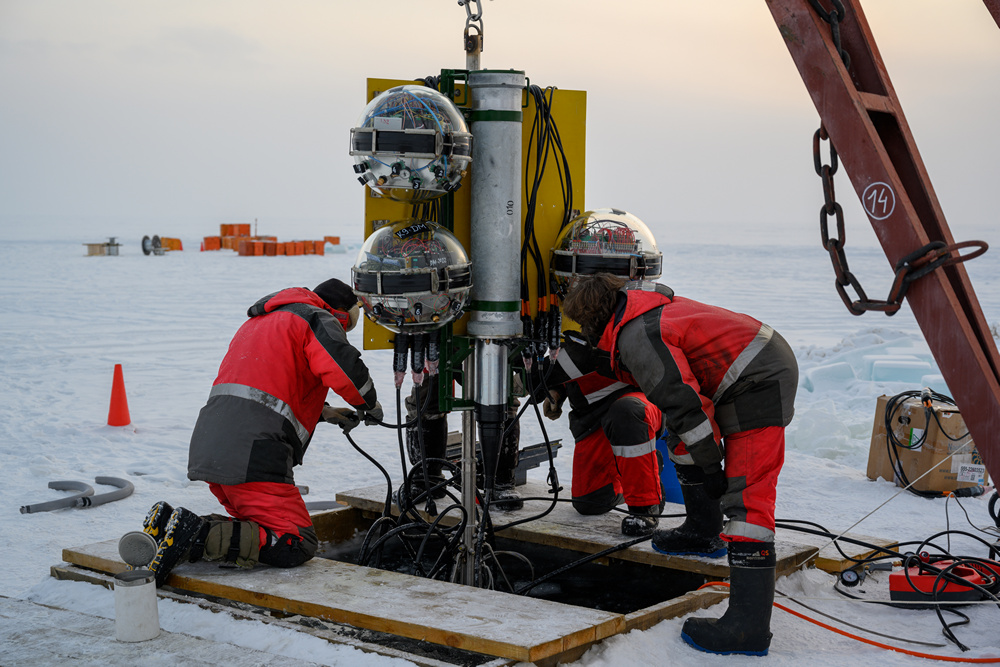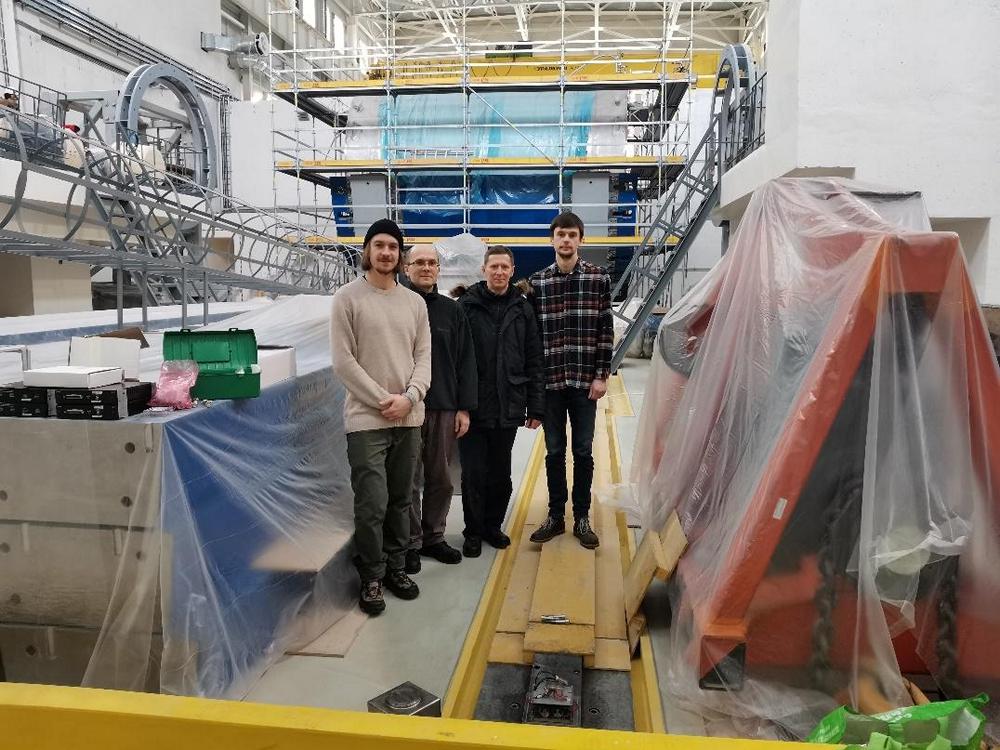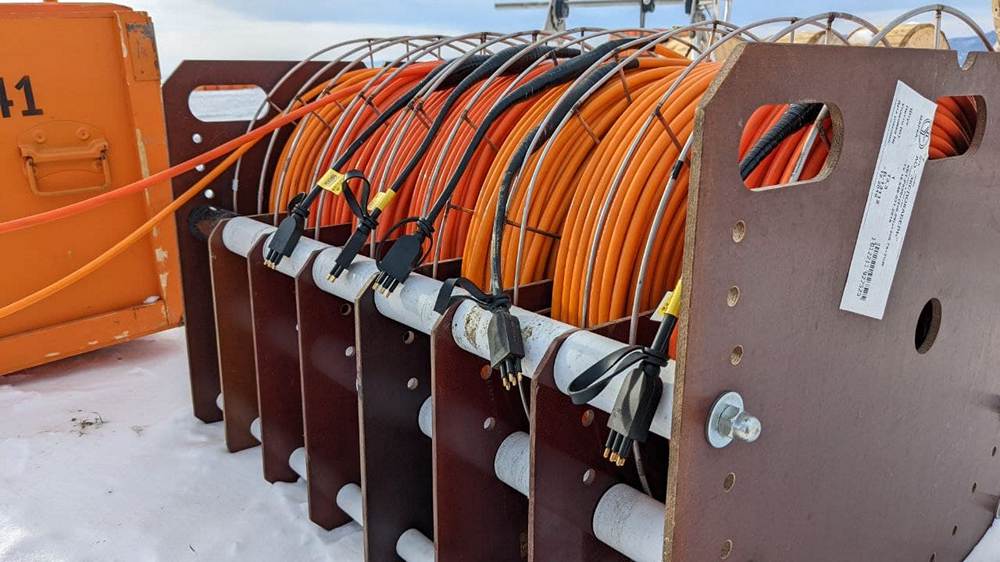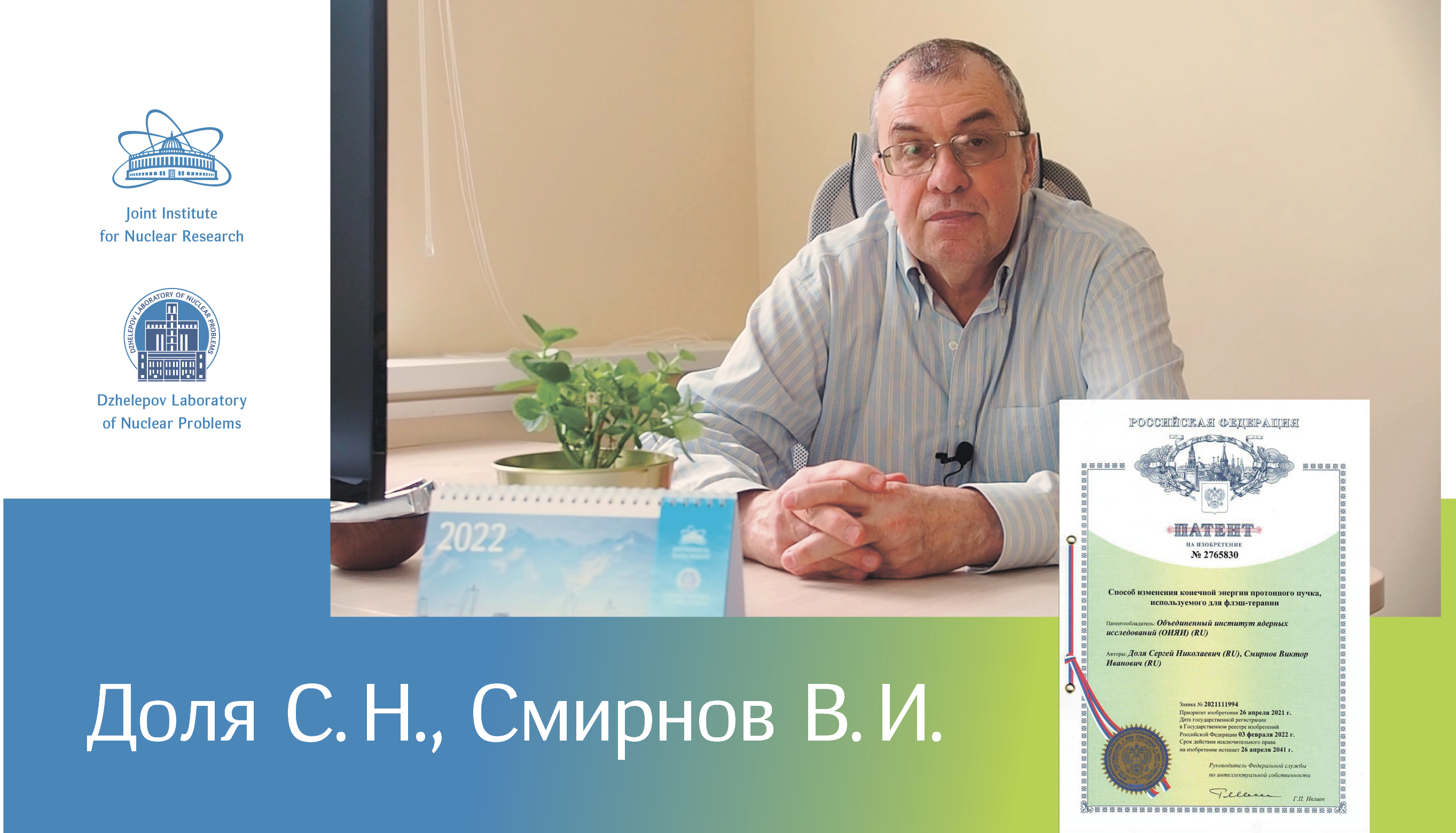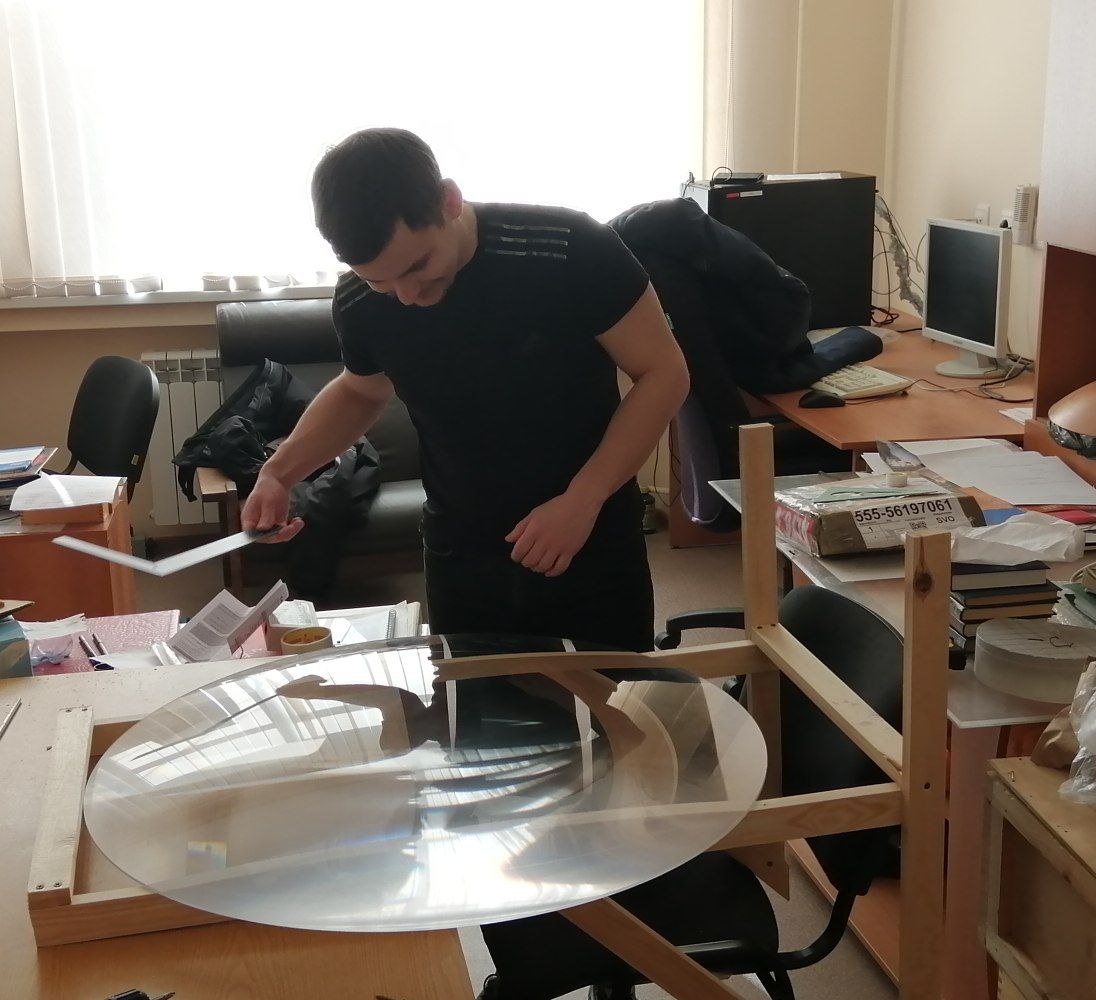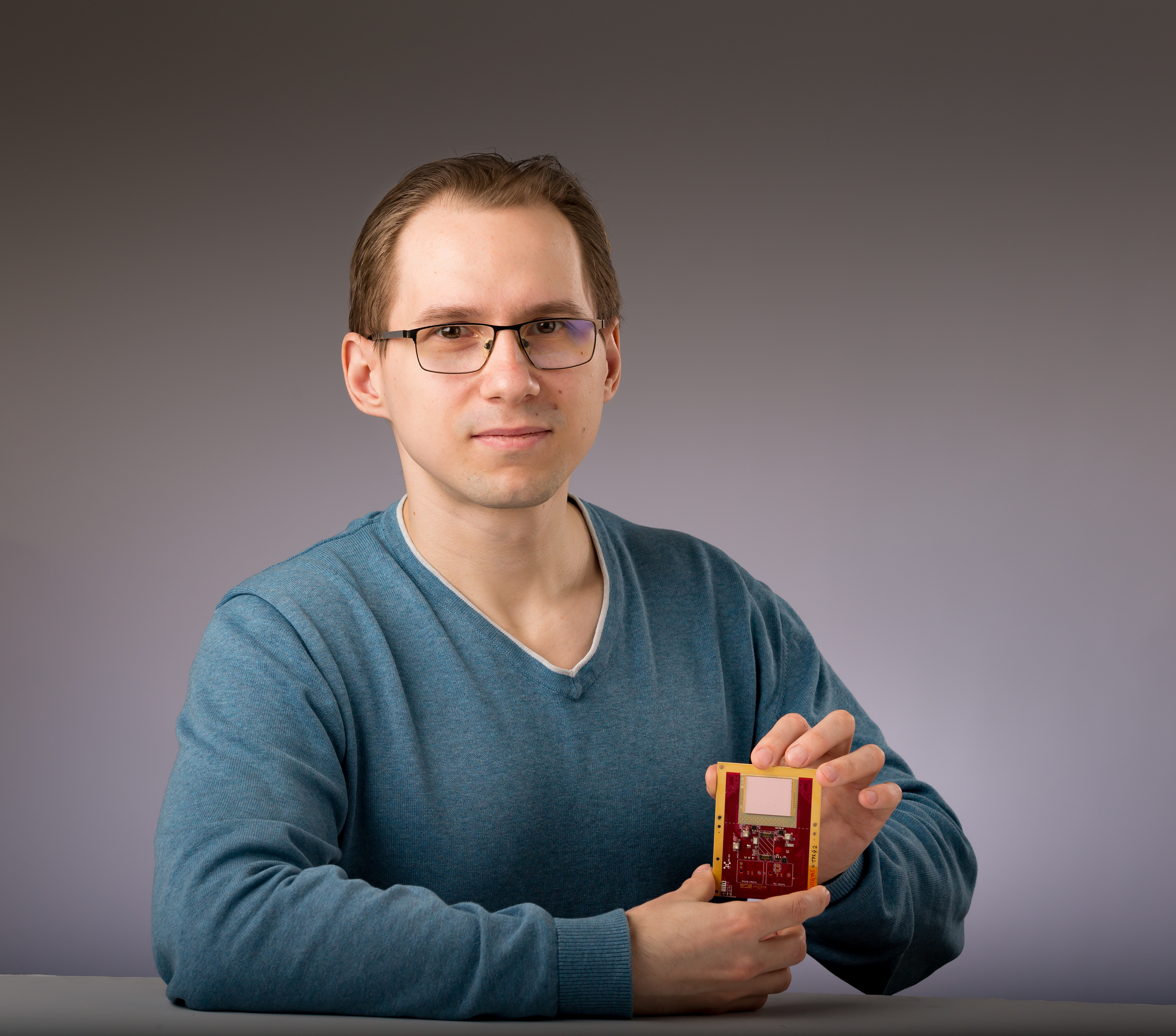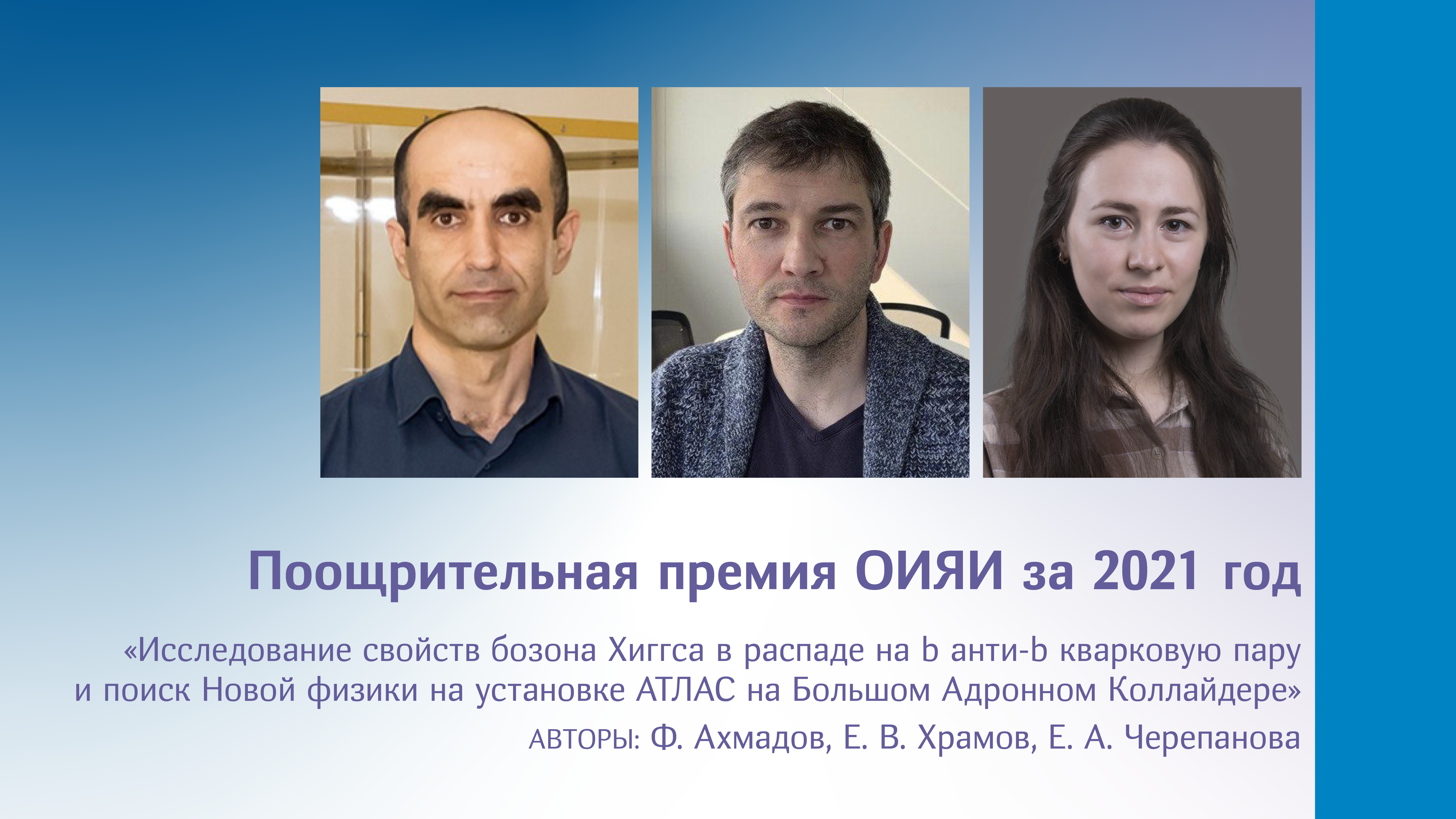News
21.03.2022
Buoys, plastic hollow orbs, provide positive buoyancy. There are two types of buoys. Orange buoys hold the string vertically, green ones horizontally support crosspieces between the central and peripheral strings.
16.03.2022
Today, eight newly mounted strings of Cluster 9 have been tested. All of them are connected in a regular way. Preparations for laying the bottom cable of Cluster 10 are finished. The first 700 m of this cable are laid. Cluster 7 is repaired, and data taking is resumed.
11.03.2022
On 4 March 2022, two compact precision laser inclinometers (CPLIs) designed at the Experimental Department of Multiple Hadronic Processes at the Sector of Mikhail Vasilevich Lyablin were transported to the experimental hall of the MPD NICA detector.
The main objective of the operational start of two inclinometers is determining the level of angular microseismic vibrations in the immediate vicinity of the MPD detector, and later, with an inclinometer network developed, along the entire perimeter of the NICA collider.
10.03.2022
One can imagine that the Baikal Neutrino Telescope is nothing more than just optical modules. Cables play a key role as well — they supply clusters with voltage and transmit signals. Each string comprises about 4.5 km of cables. That is, the entire telescope with 10 clusters (eight strings in each) will have about 360 km of cables at the end of the expedition. And this is without considering those lines that run to the shore.
10.03.2022
The JINR Department of Licenses and Intellectual Property announces that on 3 February 2022, the Joint Institute for Nuclear Research received a patent for the invention “Method for changing the final energy of a proton beam used for FLASH radiotherapy”. The authors are Sergey Nikolaevich Dolya and Viktor Ivanovich Smirnov. We congratulate our colleagues on being granted the patent!
08.03.2022
The expedition to construct the Baikal-GVD Deep Underwater Neutrino Telescope is underway. Igor Stepkin, an expedition member, wishes happy Women’s Day on behalf of all Baikalians:
Dear women, fair ladies! The Baikal expedition members wish you happy Women’s Day! We sincerely admire you, your beauty, charm and wisdom and heartily wish you the brightest things in the world! Keep on smiling! May your spirits always be high!
07.03.2022
Maksim Kolbin, a DLNP mechanic of test benches and facilities, is operating the marking winch. The marking winch is used to mark and cut supportive cables of strings.
07.03.2022
Today, we checked the track previously cleared for laying the bottom cable to the shore. There are two pressure ridges on the way. The milling cutter cuts the ice to the depth less than a metre, that is why we have to take a look under the ice using the GoPro camera to make sure that there are no hidden obstacles that could cause the breakdown of the cable.
06.03.2022
Lake Baikal, 6 March 2022. Mounting optical modules on String 4 of Cluster 9 by the team of Bair Shaybonov, Vladimir Shatunov, Dmitry Zaborov and Yury Malyshkin.
06.03.2022
The TAIGA project in which DLNP researchers are actively involved is aimed at studying the high-energy region of the gamma radiation spectrum of the Universe. The main objective of the project is searching for the origins of cosmic rays in the range between 1014 and 1018 eV. The experiment is located near the Southern edge of Lake Baikal on the astrophysical site in the Tunka valley (Republic of Buryatia) and comprises several facilities that measure parameters of extensive air showers resulting from interactions of cosmic and high-energy gamma rays with the atmosphere.
04.03.2022
Scientists from the Dzhelepov Laboratory of Nuclear Problems involved in the Medipix Collaboration have manufactured the first new Timepix4 pixel chip which provides a long-expected opportunity to proceed from “paper work” to studying chip characteristics. It will allow us to develop detectors for the use in experimental facilities while conducting fundamental and applied research.
02.03.2022
The Incentive JINR Prize 2021 was awarded to the authors of the paper “Study of the Higgs boson properties in the b−anti-b quark pair decay and search for New Physics with the ATLAS facility at the Large Hadron Collider” F. Akhmadov (VBLHEP of JINR), E. V. Khramov (DLNP of JINR), and E. A. Cherepanova (DLNP of JINR).
We heartily congratulate the authors on the Prize and wish them further success and bright scientific achievements!



